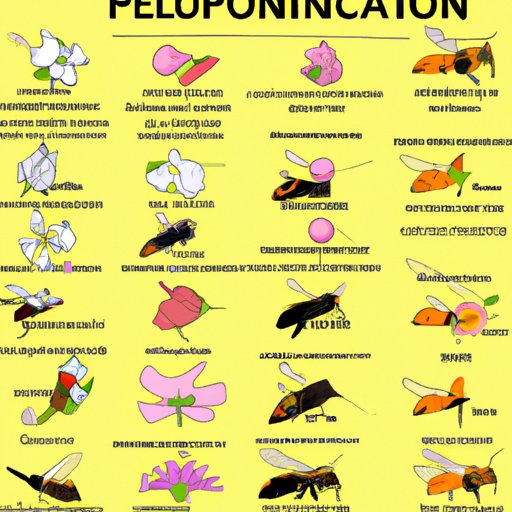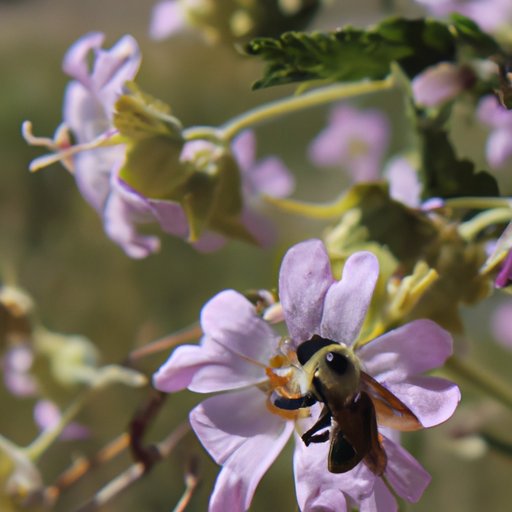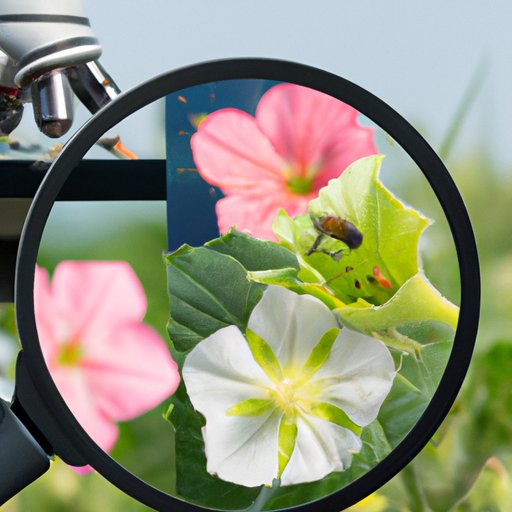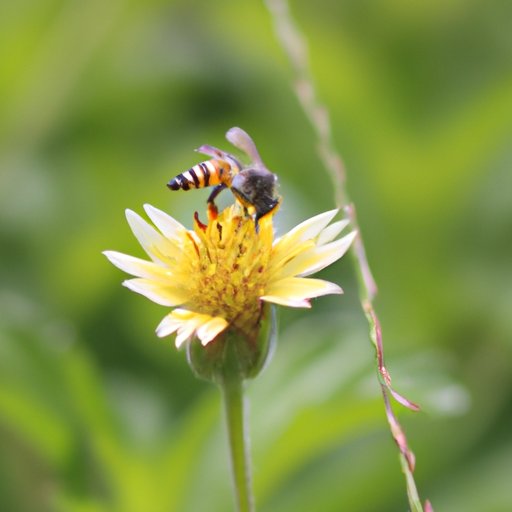Introduction
Pollination is the transfer of pollen from one flower to another, which is necessary for fertilization and the production of seeds in flowering plants. It is a critical process for most plants’ reproduction and is usually carried out by animals or the wind. In this article, we will provide a comprehensive guide to understanding how pollination works and its impact on the environment.

A Comprehensive Guide to Different Types of Pollination
Pollination can be divided into two main categories: animal-based pollination and wind-based pollination. Animal-based pollination is the most common type of pollination and is mainly carried out by insects such as bees, butterflies, birds, and other small mammals. Wind-based pollination occurs when pollen is carried on the wind and deposited on the stigma of a flower. Specialized pollinators, such as bats and hummingbirds, are also responsible for pollinating some species of plants.

Examining the Relationship Between Pollinators and Flowers
In order for pollination to occur, pollinators must first find the flowers they want to visit. Flowers produce a variety of scents and colors that attract pollinators, as well as nectar and other rewards. Once a pollinator finds a flower, it collects the pollen from the anthers and transfers it to the stigma of another flower of the same species. This process is known as cross-pollination.
Pollinators provide benefits to flowers in addition to helping with reproduction. They help disperse the flower’s pollen, which increases the chances of successful fertilization. In addition, pollinators often feed on the nectar and other rewards provided by the flowers, which helps spread the flower’s genetic material to other areas.
Investigating the Impact of Pollination on the Natural Environment
Pollinators play an important role in maintaining healthy ecosystems. They are essential for the reproduction of many plants, and their presence can have a positive effect on the diversity of plant species in an area. Without pollinators, many plants would not be able to reproduce, leading to a decrease in biodiversity.
Unfortunately, the number of pollinators in many areas is declining due to habitat destruction, pesticide use, and climate change. This decline has had a significant impact on the health of ecosystems, as fewer pollinators means fewer plants and fewer resources for other organisms.
Understanding the Science Behind Pollination
The process of pollination involves the transfer of pollen grains from the male parts of a flower (the anthers) to the female parts (the stigma). Pollen grains contain the reproductive cells of the plant, which are necessary for fertilization. When the pollen grain lands on the stigma of a compatible flower, it germinates and sends a tube down through the style to the ovary. Here, it releases sperm cells, which then fertilize the egg cell and form a seed.
Cross-pollination can also occur, which involves the transfer of pollen between two different plants of the same species. This process increases the genetic diversity of the offspring, which can have beneficial effects on the health of the population.
Comparing Animal-Based and Wind-Based Pollination
Animal-based pollination and wind-based pollination have both advantages and disadvantages. Animal-based pollination is more reliable, as pollinators can selectively choose which flowers to visit and can ensure that the pollen is transferred directly from one flower to another. However, this type of pollination requires more energy from the pollinators, and there is a greater risk of diseases being transmitted between plants.
Wind-based pollination is less reliable, as the pollen can be dispersed over a large area and may not end up on a compatible flower. However, this type of pollination does not require any effort from the pollinators, and there is less risk of disease transmission.

Analyzing the Effects of Pollination on Human Agriculture
Pollination is essential for the production of many crops, including fruits, vegetables, and nuts. Pollinators help increase crop yields by transferring pollen between flowers, which leads to increased fruit and seed production. Crops that rely on animal-based pollination, such as apples and almonds, are particularly vulnerable to declines in pollinator populations.
Unfortunately, the use of pesticides can have a detrimental effect on pollinators. These chemicals can kill or weaken pollinators, which can lead to decreased crop yields. Therefore, it is important to use pesticides responsibly and take steps to protect pollinators when possible.
Conclusion
Pollination is a critical process for the reproduction of many plants and plays an important role in maintaining healthy ecosystems. It is usually carried out by animals or the wind, and has both advantages and disadvantages. Pollinators are also essential for the production of many crops, and their decline can have serious consequences for human agriculture. Therefore, it is important to understand how pollination works and take steps to protect pollinators and the natural environment.
(Note: Is this article not meeting your expectations? Do you have knowledge or insights to share? Unlock new opportunities and expand your reach by joining our authors team. Click Registration to join us and share your expertise with our readers.)
